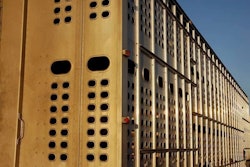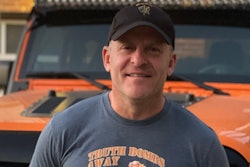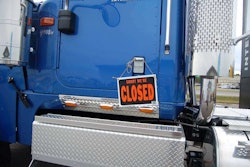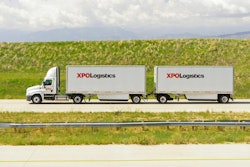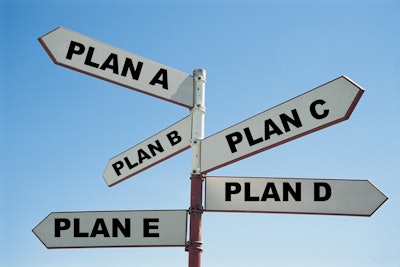
The future fleet claim that “We are 100% electric” will require a significant focus on what the military people might call “defense in depth,” a proactive layered approach to dealing with unplanned failure. The reality is that stuff happens.
Paraphrasing the sage advice of poet Robert Burns, the best laid plans of mice and men oft times go astray.
The debacle with the failures in the Texas power grid during the severe cold weather this February, and the repeated problems with providing reliable power during hot dry weather in California, are just two of many examples where a robust Plan B was needed and not in place.
Some fleets are addressing the risk of a power outage by having back-up diesel truck capacity, back-up diesel generators, back-up stored power, back-up hydrogen fuel cell generators, and other systems.
These capital assets inevitably fall under the scrutiny of cost cutters, as assets largely idle for long periods of time put a drain on profit margins. In time, these defensive systems bend to the immense pressure of cost reduction efforts and risks are rationalized away. Eventually stuff happens and the flaws in the defenses surface in catastrophic measure.
[Related: Texas-sized power outages concerning for emerging commercial EVs]
Mike Roeth, NACFE’s executive director, was reflecting to me on the utility line vehicles he saw pre-positioned for a storm.
Multiple utility districts share assets in emergencies. It’s common to see convoys of utility bucket trucks from different regions pre-positioning in the mid-west ahead of storms. During hurricanes, utilities from far away send their spare assets to help.
This is a remarkable level of cooperation between utilities based on the assumption that catastrophic events like tornadoes and hurricanes are generally isolated to a smaller region, so neighboring regions can provide emergency vehicles and staff to cover the spike in demand for repairs. This allows each individual utility to carry financially a smaller reserve of Plan B vehicles and personnel on the books.
This cooperative system breaks down when the catastrophic event crosses multiple regions, as tends to occur with major arctic storms that blanket multiple states. During these multi-region events, it’s every utility for itself, making do with the available equipment on hand. Often, these reserves are insufficient for the need, so response times lag and recovery is slow.
During the 2021 Texas Valentine’s Day arctic storm week, while my family and I were huddled around our gas fireplace without electricity with temperatures inside the house below 40 degrees – and the thermometer dropping below zero in the Dallas/Fort Worth area – I had a chance to see city fire crews responding to a neighborhood house fire.
I saw utility crews braving minus-18 degree wind chill conditions to try to get the grid back up. Brave souls with hard jobs to do and needing reliable vehicles to get their work done. If those vehicles had been electric, would they have been able to survive multiple days without power, where conditions were so severe and long that backup generators were failing and even natural gas pipelines had challenges?
[Related: It's not a question of hydrogen or battery electric vehicles]
My home, I discovered, had defense in depth on several systems through back-up batteries. In one case, it was a simple 9-volt battery. In three others, there were larger battery packs. All failed after hours without grid power.
We had back-up power packs for our cell phones, but those also ran out of power in time. And then the cell phone network actually went down. My NACFE conviction that the future of trucking is electric was sorely challenged, as I am sure some EV car owners in California had doubts during regional blackouts there from risk of fires and then actual conflagrations.
As an engineer, I know that all of these emergency situations are predictable. Four inches of snow and sub-freezing cold occurs cyclically in Texas. Drought, high winds, high heat and fires occur cyclically in California. These two electric states have centuries of history to work from and endless sophisticated trend models available to help define the problem space.
Defense in depth starts from assuming systems will fail and then proactively designing for those failures. A tool often cited is the Failure Modes Effect Analysis.
Inevitably there is some need for estimation of risk. Like insurance companies with actuarial tables, engineers have to estimate the probability of an event (or a series of events) occurring to create a failure. It’s reasoned guessing. Then the engineers develop plans to mitigate the risk. Those plans require funding, so financial decision-making enters the process. Financial rationalization starts early that some risks are too expensive and too improbable to mitigate. Ultimately, those decisions can be proven wrong.
Fleets face risks daily with delivering freight.
A driver gets ill. Who takes the load? A shipper is late loading a truck. How does that delay impact other deliveries? Bad weather shuts down routes. How does the truck get to its destination on time? A port labor strike shuts down ocean deliveries. How do you shift freight capacity to other modes? A shortage of containers prevents shipping to ports. How do you get the load to a ship? An accident stops traffic. How does the truck get to the dock on time?
Fleets deal with this insecurity daily. They adapt, innovate and overcome or they fail. The better prepared, the more flexible and the ones who have thought through the Plan Bs generally succeed.
The zero emission electric future, whether solely battery electric, solely hydrogen fuel cell, or a mixture of both, will need to be resilient as both modes depend heavily on electricity.
NACFE’s Guidance Reports on electric and hydrogen vehicles have highlighted how grid capacity will need to grow by multiples to support the zero-emission future for freight. Plan Bs will require extra measures that may be idle for long periods between crises. Financial considerations will need to weigh heavily rationalizing away risk, as failure to plan never does a company well as an excuse following a catastrophe.
Plan Bs are needed. The headlong rush to the electric future needs to bring with it the maturity to plan for failures. Investors, regulators, the public tax payers, utilities, fleets and shippers all need to accept that resiliency should never be an afterthought.
Rick Mihelic is NACFE’s Director of Emerging Technologies. He has authored for NACFE four Guidance Reports on electric and alternative fuel medium- and heavy-duty trucks and several Confidence Reports on Determining Efficiency, Tractor and Trailer Aerodynamics, Two Truck Platooning, and authored special studies on Regional Haul, Defining Production and Intentional Pairing of tractor trailers.




